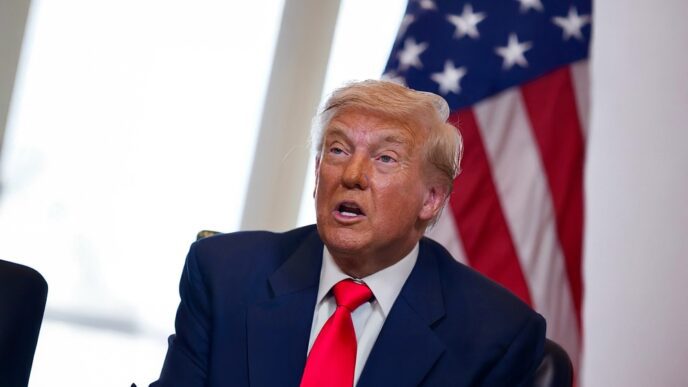Executive Summary
The Story So Far
Why This Matters
Who Thinks What?
A “third mandate” for the U.S. Federal Reserve, recently highlighted by a Trump administration official, is sparking significant speculation that the central bank could adopt more aggressive monetary policies, such as yield curve control. This potential shift could have profound implications, including a devaluation of the dollar and a substantial rally in cryptocurrency markets, according to some analysts.
The Fed’s Evolving Mandate
Traditionally, the Federal Reserve has been understood to operate under a dual mandate: maintaining price stability and achieving maximum employment. However, Stephen Miran, a pick for Fed governor by President Donald Trump, recently drew attention to a “third mandate” embedded within the central bank’s founding documents.
This statutory requirement, found in the 1913 Federal Reserve Act, stipulates three objectives for the central bank: maximum employment, price stability, and moderate long-term interest rates. While the goal of moderate long-term interest rates has largely been considered a natural byproduct of achieving the first two mandates for decades, the Trump administration appears poised to leverage it as justification for more direct intervention.
Administration’s Push for Lower Rates
The Trump administration is reportedly prepared to use this rediscovered statutory requirement as legal cover for more aggressive actions in bond markets. This could include policies like yield curve control, expanded quantitative easing, or direct money printing, as reported by Bloomberg.
President Trump has consistently advocated for lower interest rates, frequently criticizing Fed Governor Jerome Powell for being “too slow” or “too late” in reducing them. The administration’s objective is to actively suppress long-term interest rates, which would help reduce government borrowing costs as the national debt continues to climb, currently standing at a record $37.5 trillion. Additionally, lower long-term rates aim to stimulate housing markets by bringing down mortgage rates.
Potential Impact on Cryptocurrencies
The prospect of the Fed actively suppressing long-term rates has drawn significant attention from the cryptocurrency community, with many experts predicting a bullish outcome for digital assets.
Christian Pusateri, founder of encryption protocol Mind Network, characterized the third mandate as “financial repression by another name,” noting its strong resemblance to yield curve control. Pusateri explained that “the price of money is coming under tighter control because the age-old balance between capital and labor, between debt and GDP, has become unstable.” He further asserted that “Bitcoin stands to absorb massive capital as the preferred hedge against the global financial system.”
Similarly, outspoken BitMEX founder Arthur Hayes has suggested that such policies would be bullish for crypto, even speculating that yield curve control could propel Bitcoin’s price to $1 million.
Key Takeaways
The re-emphasis on the Federal Reserve’s “third mandate” signals a potential shift towards more interventionist monetary policies aimed at actively managing long-term interest rates. While intended to alleviate government debt burdens and stimulate economic sectors like housing, this approach is viewed by some as a form of financial repression. Experts in the cryptocurrency space anticipate that such policies could significantly devalue traditional currencies, driving substantial capital towards digital assets like Bitcoin as a hedge against inflation and systemic instability.












